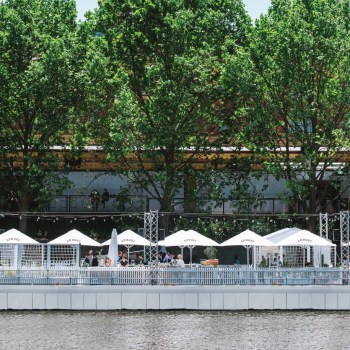When it comes to sparkling wine, many customers default to Champagne, but increasingly ‘local’ is a popular trend with consumers looking to support Australian producers through the challenges of the pandemic.
Australian Prosecco is a great local alternative and is a great choice for summer as well as for people who are looking to have a different experience or a food-friendly wine.
Grant Burge has added two new Prosecco wines to its premium range, just in time for summer, with the launch of Grant Burge Prosecco NV and Prosecco Rosé, and Chief Winemaker, Craig Stansborough explained to Bars and Clubs why Prosecco is such a food friendly wine.
“Prosecco is well-known for how superbly it pairs with a variety of food – some of its most reliable characteristics such as lower ABV and high acidity make it very food friendly,” he said.
“Prosecco is lively, and fresh, and easily weaves into different layers of food. It is widely regarded as the perfect aperitif, but it pairs perfectly from your entree course of fresh seafood to mains of meat or spicy curries and even fruity desserts and savoury cheese.”
Craig added: “Prosecco is perfect for any occasion that calls for a touch of celebration. If you’re looking for the perfect drink to sip in the sun this summer, prosecco is versatile enough to drink as an aperitif, paired with a meal, or used as an ingredient in a cocktail. It also makes a perfect gift to be enjoyed by friends and family.
“There has never been a better opportunity to support local and buy Australian Prosecco. Many Australian wine producers are still recovering from a difficult number of years, impacted by drought, bushfires and most recently, the economic effect of COVID-19.”
Craig also explained to Bars and Clubs the key differences between Champagne and Prosecco, which may help venues when it comes to encouraging customers to choose Prosecco.
“Both Champagne and Prosecco are popular types of sparkling wines. Champagne is a blend or single varietal (Chardonnay, Pinot Noir and/or Pinot Meunier), while Prosecco is made exclusively from the Glera grape variety,” Craig said.
“Another key difference in these sparkling wines are the methods of production. In Champagne, the method ‘Champenoise’ is used. With Prosecco, the ‘Charmat method’ is used. The Charmat method applies two to four atmospheres of pressure, which means that wines have a softer carbonation than wines made in the Champenoise method.
“In both cases, the still wine undergoes a second fermentation which involves creating CO2 to make it sparkling.
“Champagne and Prosecco also have different taste profiles. Champagne is higher in acidity and exhibits notes of yeast and nuts, while Prosecco is much lower in acidity and more fruit driven and lighter in style.”
The new Prosecco range is available now through your Accolade representative.



